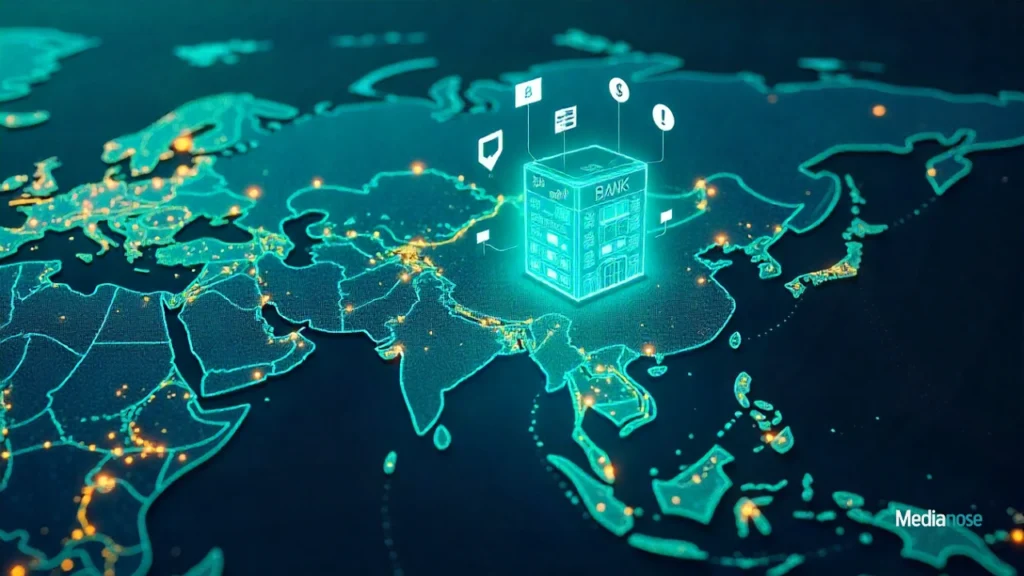Asia is quickly becoming the hub of digital financial innovation, and FTAsiaFinance Technology is at the heart of this transformation. It is changing the way people, businesses, and governments interact with money by making transactions faster, safer, and more accessible. From mobile banking to blockchain solutions, FTAsiaFinance Technology is reshaping financial landscapes, enabling financial inclusion, and fostering a new era of innovation that impacts everyone in the region.
Understanding FTAsiaFinance Technology
FTAsiaFinance Technology refers to the application of advanced technological tools and innovations to financial services across Asia. It combines artificial intelligence (AI), blockchain, big data, and mobile solutions to improve efficiency, security, and convenience. By integrating technology into traditional banking and financial processes, it enables more people to access financial products that were previously unavailable to them.
Some key features of FTAsiaFinance Technology include:
- AI-driven analytics: Helps banks and fintech companies make faster, data-driven decisions.
- Blockchain and digital ledgers: Provides secure, transparent, and tamper-proof transaction records.
- Mobile-first banking: Makes financial services accessible through smartphones for millions of users.
- Digital payment solutions: Reduces the reliance on cash, supporting seamless e-commerce and peer-to-peer transactions.
The Driving Forces Behind FTAsiaFinance Technology

Mobile-First Infrastructure
Asia has one of the highest mobile penetration rates in the world, making mobile-first financial solutions a natural fit. Users can now perform a variety of banking functions, such as money transfers, bill payments, and even investing, directly from their phones. Countries like India, Indonesia, and the Philippines have particularly seen rapid adoption due to improved internet access and affordable smartphones.
Also Read
Youth-Driven Digital Adoption
A significant portion of Asia’s population is under 35, which means digital solutions are more easily embraced. Young consumers are tech-savvy, open to experimentation, and expect seamless, personalized experiences from their financial services. This demographic has fueled the growth of digital wallets, buy-now-pay-later services, and online investment platforms, all powered by FTAsiaFinance Technology.
Government Support and Regulatory Frameworks
Governments in Asia are actively supporting fintech growth through regulations and incentives. For example:
- Singapore’s FinTech Regulatory Sandbox allows startups to test new financial products safely.
- India’s Digital India initiative has promoted financial literacy and mobile banking accessibility.
- Indonesia’s national e-money policy encourages digital payment adoption.
These policies ensure that innovation continues while protecting consumers and maintaining financial stability.
Investment and Ecosystem Development
The rapid rise of FTAsiaFinance Technology has been fueled by substantial investments and the growth of a vibrant ecosystem. Key points include:
- Domestic and foreign investments are driving fintech innovation.
- Startups, traditional banks, and tech giants are collaborating to develop new products.
- Accelerators and incubators provide mentorship, funding, and technical support.
This ecosystem ensures a continuous flow of new services, creating a competitive market that benefits consumers with better, faster, and safer financial solutions.
Key Technologies Driving the Future

Artificial Intelligence (AI)
AI is transforming banking and finance by enabling predictive analytics, fraud detection, and personalized customer experiences. Banks can now identify risky transactions in real-time, offer tailored investment advice, and provide automated customer support through chatbots.
Blockchain
Blockchain ensures secure, transparent, and efficient transaction management. It reduces the need for intermediaries, lowers costs, and speeds up cross-border payments. Many Asian countries are exploring central bank digital currencies (CBDCs) powered by blockchain.
Mobile Payment Solutions
Mobile payment apps like GCash, Paytm, and GrabPay have revolutionized how people transact daily. These platforms allow instant payments, bill splitting, online shopping, and peer-to-peer transfers, making cashless economies more attainable.
Big Data Analytics
Big data helps companies understand consumer behavior, improve financial products, and manage risk. By analyzing spending patterns, banks can offer personalized loans, detect fraud, and optimize investment strategies.
Benefits of FTAsiaFinance Technology
The adoption of FTAsiaFinance Technology provides numerous advantages for individuals, businesses, and governments:
- Financial Inclusion: Brings banking services to remote and underserved populations.
- Efficiency: Reduces transaction time and operational costs.
- Security: Advanced encryption and blockchain minimize fraud risks.
- Accessibility: Mobile and online platforms make financial services available anytime, anywhere.
- Innovation: Encourages new products, services, and business models in the finance sector.
Challenges and Considerations
Despite its many benefits, implementing FTAsiaFinance Technology comes with challenges:
- Cybersecurity Risks: Increased digital transactions expose systems to hacking.
- Regulatory Compliance: Companies must navigate complex laws across different countries.
- Digital Literacy: Some populations may struggle to adopt new technologies without guidance.
- Infrastructure: Reliable internet and mobile coverage are essential for full adoption.
By addressing these challenges, Asian countries can ensure that fintech growth is sustainable and beneficial for all.
The Future Outlook
The future of FTAsiaFinance Technology looks promising. Experts predict continued growth in AI-powered banking, blockchain-based digital currencies, and mobile-first financial solutions. With governments, investors, and technology developers actively supporting innovation, Asia is poised to lead the world in digital finance adoption.
Chart: Projected Growth of Digital Finance Users in Asia (2025–2030)
| Year | Users (in millions) |
|---|---|
| 2025 | 850 |
| 2026 | 920 |
| 2027 | 1,010 |
| 2028 | 1,120 |
| 2029 | 1,250 |
| 2030 | 1,400 |
This growth reflects increasing accessibility, improved digital infrastructure, and widespread adoption of FTAsiaFinance Technology.
FAQs
Q1: What is FTAsiaFinance Technology?
A1: It is the integration of technology like AI, blockchain, and mobile platforms into financial services across Asia to improve efficiency, security, and accessibility.
Q2: How does FTAsiaFinance Technology benefit users?
A2: It enhances financial inclusion, speeds up transactions, increases security, and offers personalized financial services.
Q3: Which countries are leading in adopting FTAsiaFinance Technology?
A3: Singapore, India, Indonesia, and the Philippines are some of the leaders due to supportive regulations, tech adoption, and mobile-first infrastructure.
Q4: What challenges exist in implementing FTAsiaFinance Technology?
A4: Cybersecurity risks, digital literacy gaps, regulatory compliance, and infrastructure limitations are key challenges to address.
Conclusion
FTAsiaFinance Technology is redefining the financial landscape of Asia by merging technology with traditional banking to create a more inclusive, efficient, and secure ecosystem. Its innovations are not only improving daily transactions but also paving the way for new financial solutions that cater to diverse populations. As governments, businesses, and individuals continue to adopt and adapt to these advancements, Asia is set to become a global leader in digital finance, demonstrating the power of technology to transform the way we manage and access money.





